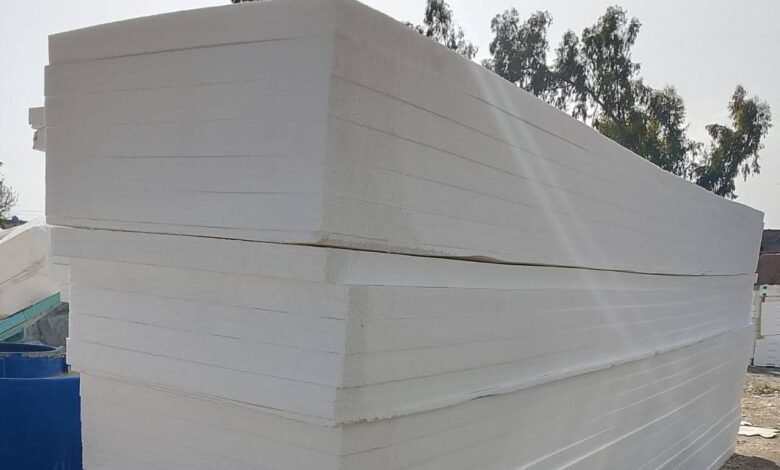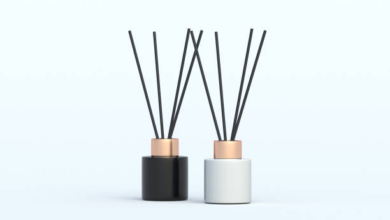Thermocol Sheet: The Ultimate Guide to Insulation, Uses, and Benefits

In modern construction and insulation systems, thermocol sheet has become one of the most widely used materials due to its lightweight, durable, and energy-efficient nature. Known for its superior thermal insulation and shock absorption properties, thermocol (also called expanded polystyrene or EPS) is used across industries ranging from building insulation to packaging and creative design projects.
This detailed guide explains everything you need to know about thermocol sheets, including their properties, insulation system, benefits, applications, and comparison with thermopore sheets.
What is a Thermocol Sheet?
A thermocol sheet is a lightweight material made from expanded polystyrene (EPS) beads. These beads are heated and expanded to form a rigid, foam-like structure that traps air, providing excellent thermal and sound insulation.
Thermocol sheets are available in various densities and thicknesses depending on their intended use — from delicate product packaging to large-scale insulation sheet applications in buildings.
In Pakistan and globally, thermocol sheets are commonly used in roof insulation systems, cold storage, and even decorative interiors.
Thermocol Insulation System: Energy Efficiency at Its Best
What is a Thermocol Insulation System?
A thermocol insulation system involves using thermocol or thermopore sheets to create a thermal barrier in walls, roofs, and floors. The trapped air pockets within the sheet act as a buffer, reducing heat transfer between indoor and outdoor environments.
This helps maintain consistent indoor temperatures, reducing the load on air conditioning systems and leading to significant energy savings.
How It Works
- Installation Under Roofs or Walls – Thermocol sheets are placed between layers of roofing or wall panels.
- Heat Reflection & Retention – The sheets reflect heat in summer and retain warmth in winter.
- Energy Efficiency – This process reduces electricity bills and keeps interiors comfortable year-round.
Benefits of Using Thermocol Sheet for Insulation
1. Excellent Thermal Insulation
The primary advantage of a thermocol sheet lies in its low thermal conductivity. It minimizes heat transfer, keeping buildings cooler during summer and warmer in winter.
2. Lightweight & Easy to Install
Thermocol sheets are extremely lightweight, making them easy to transport and install on-site. They can be cut, shaped, and placed without requiring heavy machinery.
3. Cost-Effective Solution
Compared to other insulation materials, thermocol insulation sheets offer an affordable alternative without compromising quality or durability.
4. Moisture Resistance
Thermocol is non-absorbent, making it ideal for humid environments. It prevents condensation and protects structural elements from dampness and mold.
5. Long-Lasting and Durable
Thermocol sheets are resistant to aging and retain their insulation properties for many years, making them a long-term investment.
Thermocol Sheet vs Thermopore Sheet: What’s the Difference?
While thermocol and thermopore are often used interchangeably, there are subtle differences worth noting:
| Feature | Thermocol Sheet | Thermopore Sheet |
| Material | Expanded Polystyrene (EPS) | Expanded Polystyrene (EPS, finer quality) |
| Texture | Slightly rough surface | Smoother, denser structure |
| Insulation Efficiency | Good | Better, due to higher density |
| Durability | Moderate | High |
| Cost | Affordable | Slightly expensive |
Both types are excellent for insulation purposes, but thermopore sheets are often preferred for high-performance insulation systems in buildings and cold storage units.
Common Applications of Thermocol Sheet
1. Building Insulation
Thermocol sheets are widely used as roof and wall insulation in residential and commercial buildings. They help reduce electricity costs by minimizing heat transfer.
2. Cold Storage and Refrigeration
Due to their superior thermal properties, thermocol sheets are used in cold storage rooms, refrigerated trucks, and food preservation units.
3. Packaging Industry
Thermocol provides cushioning and protection for fragile items like electronics, glassware, and medical equipment during shipping.
4. Interior Design and Decoration
In the creative industry, thermocol sheets are used for 3D modeling, stage decoration, art displays, and even signage due to their versatility and easy shaping.
5. Soundproofing Applications
When combined with other materials, thermocol acts as an effective sound insulation sheet, reducing noise pollution in studios, offices, and homes.
How to Choose the Right Thermocol Sheet for Your Needs
When selecting a thermocol or thermopore sheet, consider the following factors:
- Density: Higher density offers better insulation but at a higher cost.
- Thickness: Thicker sheets provide superior temperature and sound control.
- Application Area: Roof, wall, or floor insulation may require different sizes or materials.
- Moisture Resistance: For humid environments, use water-resistant variants.
For example, thermopore insulation sheets are ideal for roofs exposed to direct sunlight, while standard thermocol sheets work well for interior walls and ceilings.
Installation Process for Thermocol Insulation
Step 1: Surface Preparation
Ensure that the surface (wall, ceiling, or roof) is clean, dry, and free from dust or grease before installation.
Step 2: Cutting and Fitting
Thermocol sheets are cut according to the required dimensions using a hot wire cutter or blade.
Step 3: Fixing
Sheets are affixed using adhesive, mechanical fasteners, or both, ensuring no air gaps remain between panels.
Step 4: Finishing
Once fixed, the surface can be covered with plaster, tiles, or roofing sheets for aesthetic and protective purposes.
Cost of Thermocol Sheet in Pakistan
The price of thermocol sheet in Pakistan depends on size, density, and brand. On average:
- Standard thermocol sheet (1 inch thick): Rs. 250 – Rs. 350 per sheet
- Thermopore sheet (high density): Rs. 350 – Rs. 500 per sheet
For large insulation projects, buying in bulk can significantly reduce the overall cost. Always choose reputable suppliers to ensure material quality and longevity.
Environmental Impact and Sustainability
While thermocol is a synthetic material, its energy-saving properties indirectly contribute to environmental sustainability by reducing electricity consumption.
However, since thermocol is non-biodegradable, recycling and responsible disposal are essential. Some manufacturers now produce eco-friendly thermocol sheets with partial recyclability to address this concern.
Future of Thermocol and Thermopore Insulation Systems
As the demand for energy-efficient buildings grows, thermocol insulation systems will continue to evolve. Advances in manufacturing are making sheets more durable, moisture-resistant, and environmentally friendly.
Emerging hybrid materials are combining thermocol with reflective foils and waterproof coatings, offering even better thermal performance.
Conclusion
A thermocol sheet is one of the most efficient and affordable solutions for thermal insulation in modern construction. Whether you’re designing a home, office, or cold storage facility, thermocol insulation systems can help you achieve energy efficiency, temperature stability, and cost savings.For long-term performance, always choose high-density sheets and professional installation. Investing in quality thermopore or thermocol insulation sheets today ensures a more comfortable and energy-efficient environment tomorrow.




